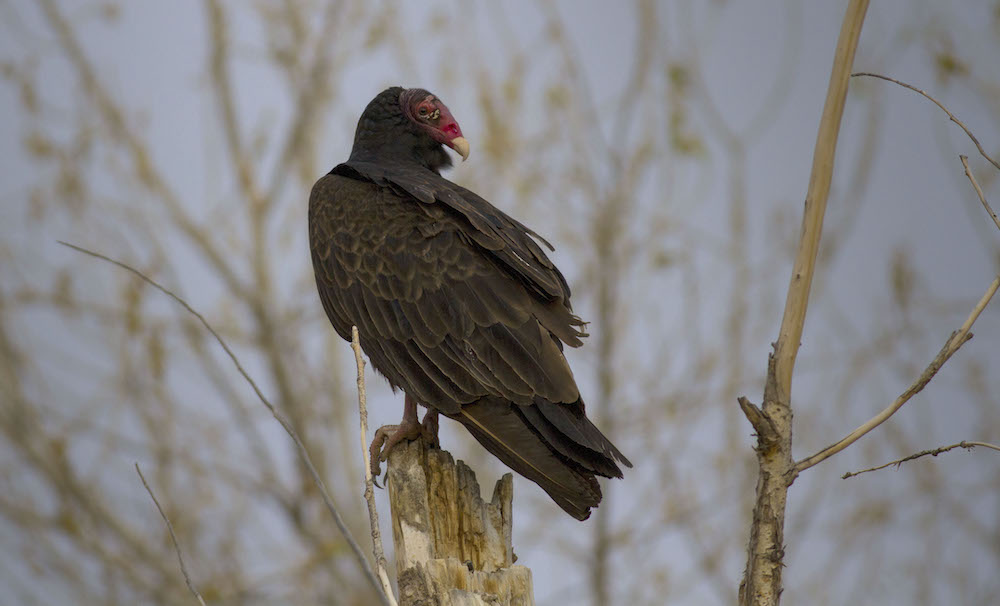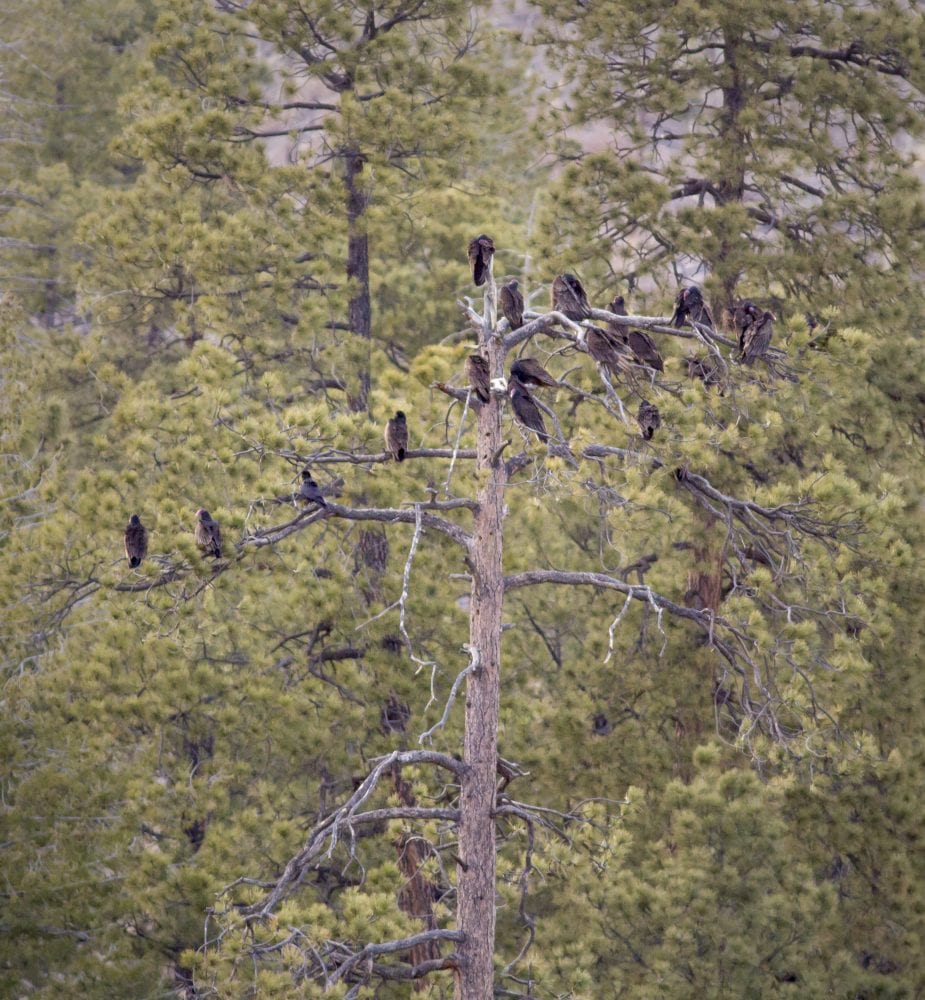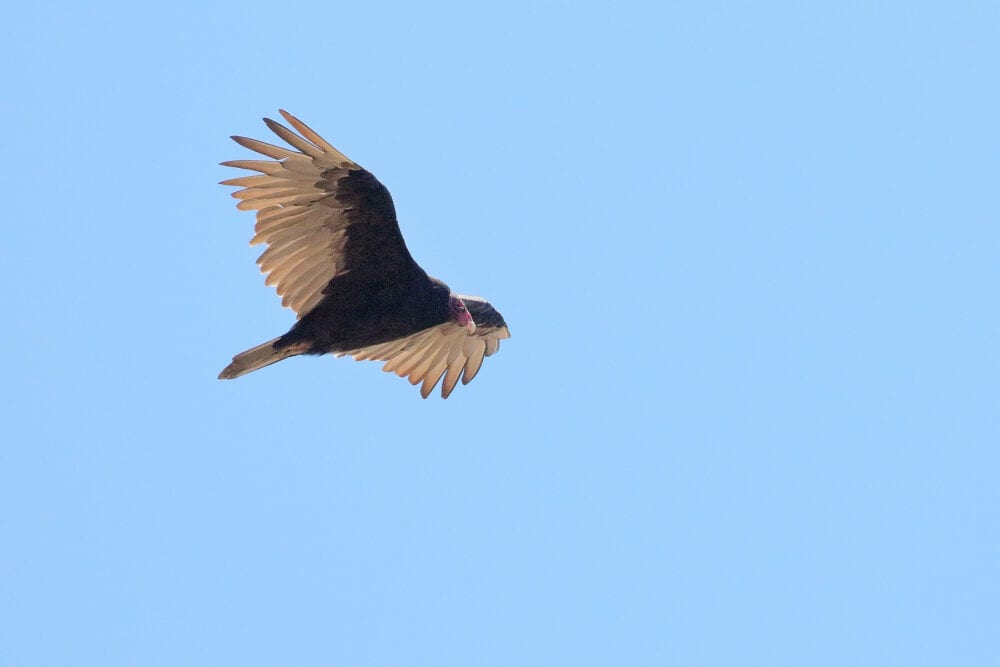
By Bob Loy
St. Patrick’s Day in Los Alamos County is cause for more than one reason to celebrate. Aside from the obvious day of celebrating Irish heritage, our beloved Turkey Vultures return to their roost in Omega Canyon (just behind the ice rink). For the last few months, they’ve been wintering in Mexico and Central America. Some fly as far as South America before returning each spring to breed in North America.
Turkey Vultures were spotted in Los Alamos County for the first time in 2020 on Sunday, March 15 near the Los Alamos Ice Rink, so they are starting to arrive now!
Many are surprised to learn that Turkey Vultures are my favorite bird. Here are a few fun facts that brought me to this conclusion:

- By consuming the carcasses of diseased animals, vultures prevent the spread of life-threatening diseases such as rabies and anthrax among animals and humans.
- Vultures are equipped with a digestive system that contains special acids that will dissolve anthrax, botulism, and cholera bacteria.
- Vultures have the unusual habit of urohydrosis — defecating on their legs to cool them by evaporation.
- The bald, or lightly-feathered, head is specially designed to stay clean even when confronted with blood and bodily fluids present in the carcasses. Any remaining germs are baked off by the sun.
- Most vultures mate for life.
Soooooo, the next time you see a Turkey Vulture eating something dead on the road don’t say “yuck.” A simple “Thanks!” is more in order. And, if you have time and can do so safely, push that dead thing off the road so the Turkey Vulture won’t get hit by a car.
How to Find and Identify Turkey Vultures:

- Turkey Vultures appear to be black from a distance. When you see them up close, you’ll notice that they are dark brown with a featherless red head and a pale bill.
- On sunny days, look for them flying as early as 9 AM. In colder weather and at night they roost on poles, towers, dead trees, and fence posts. The trees near the ice rink are a good place to start your search in the morning or around sunset.
- Look for them gliding relatively low to the ground, sniffing for carrion, or else riding thermals up to higher vantage points.
- Soaring Turkey Vultures can be identified by the long “fingers” at their wingtips and their long tails. Their bodies and the tops of their wings are dark, but the bottom of their flight feathers are much paler.
- Turkey Vultures raise their wings slightly when they soar, making a “V” shape. They rarely flap and wobble a bit while cruising through the air.
- They may soar in small groups and roost in larger numbers. You may also see them on the ground in small groups, huddled around roadkill or dumpsters.

And Ben Franklin wanted the Turkey Vulture as our national bird, right? because of all the awesome things you noted above! Didn’t know they are migratory – thanks! I do know they are majestic fliers, soaring for long thermal rides!
Just did a bit of quick research and it looks like the myth was that he wanted a turkey as the national bird! But, I think Turkey Vultures would make a pretty awesome national bird, too.
If Franklin had known about the Turkey Vulture, he would have chosen it. It can fly for ages without flapping its wings. (But I’m guessing the Turkey Vulture wouldn’t have been around at Thanksgiving–vacationing in the southern hemisphere, far from the Thanksgiving table.)
Thanks for the nice post on these birds. Can you tell us whether there is anyone assembling a map of turkey vulture nest sites in NM?
Sierra County has an unusually large number of roosting sites, as does Omega canyon.